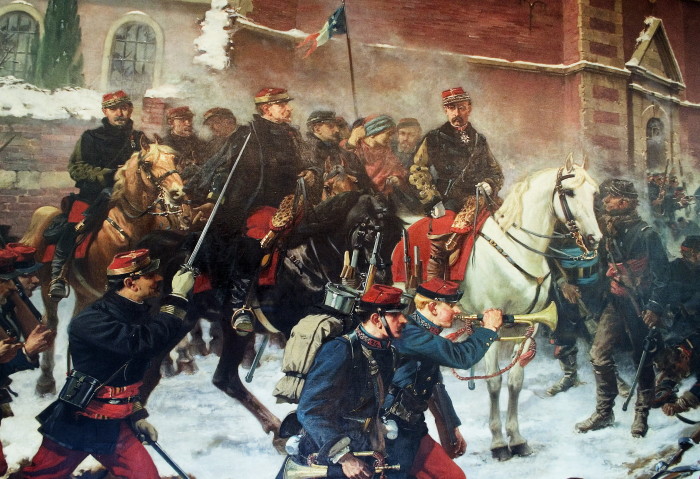
“Although not a major contributor to the 1940 air campaign against Britain, Italy did volunteer as many as 170 planes to the effort. In fact, more than five per cent of the 2,500 Axis aircraft committed to the battle were Italian.”
Oct. 29, 1940, 4:40 p.m. – the Battle of Britain was nearing the end of its 112th day when 16 enemy bombers appeared in the skies over the English town of Ramsgate, Kent.
Air raid sirens wailed as the twin-engine aircraft skimmed the rooftops of the small seaside city. After passing though a cordon of anti-aircraft fire, the bombers released their payloads onto the local port facility. At almost the same time, a lone plane from the group struck a Royal Marines barracks a few miles down the coast at Deal.
Overall, the raid was largely ineffective — six Allied soldiers died in the attack. For their part, British anti-aircraft batteries damaged five of the enemy bombers.
Despite the deaths on the ground, the late-afternoon strike was considered a minor raid, particularly when compared to larger, more deadly attacks carried out that same day against London, Coventry and Portsmouth. Yet, the Ramsgate bombing is still noteworthy, mostly because the aircraft involved weren’t German at all — they were from the Regia Aeronautica or the Italian Royal Air Force.
Although not a major contributor to the 1940 air campaign against Britain, Italy sent as many as 170 planes to take part in the Blitz. In fact, more than five per cent of the 2,500 Axis aircraft committed to the battle were Italian.

Italy Lends a Hand
Despite being an ally of Germany, Italy spent the opening months of the Second World War on the sidelines. Having cynically waited until the eve of Paris’ fall before declaring war on both France and Britain, the dictator Benito Mussolini pledged what little support he could muster to Hitler’s planned air campaign against the United Kingdom.
Rome’s contingent, dubbed the Corpo Aereo Italiano (CAI) or “Italian Air Corps,” began arriving at airfields in Nazi-occupied Belgium on Sept. 10, 1940. By that point, the Luftwaffe was already carrying out daily raids against southern England. Yet, it would be more than a month before the Italian planes would see action. Even then, only a handful of sorties were ever flown by the CAI.

Italy’s Warplanes
Among the Italian warplanes to see action in the Battle of Britain was the Fiat BR.20, a twin-engine, medium bomber.
First introduced in 1936, the BR.20 had already flown missions against republican forces in the Spanish Civil War. Japan too had ordered 80 of the machines and by the end of the 1930s were using them with some success in China. The BR.20, which had a crew of five, could deliver 3,500 lbs. of bombs — about three-quarters the payload of a German Heinkel 111. But with a top speed of 440 km/h (270 mph) and only three defensive machine guns, the bomber was an easy target for RAF fighters. In fact, during one abortive raid on Kent, launched on Nov. 11, 1940, a formation of 10 BR.20s with fighter escort fell prey to a squadron of Hawker Hurricanes. Within moments, three of the bombers had been destroyed and another three were damaged but still airworthy. Upon learning of the encounter, Prime Minister Churchill quipped that the Italian warplanes would have been more useful to the Axis had they been on hand to defend the port of Taranto, which was attacked by Royal Navy aircraft that very same day. [1]
In addition to the BR.20, two different classes of Italian-made fighter planes took to the skies over Britain. One was the Fiat G.50 Freccia, Italy’s best interceptor at the time. But with a top speed of 470 km/h (290 mph), the G.50 came up short against RAF Hurricanes and Spitfires. Yet, Freccias still flew escort on 34 separate Axis bombing raids.[2] Despite their shortcomings, only one G.50 was ever lost in action over England. Seven were damaged.

Perhaps the most effective of the Italian warplanes to fight in the Battle of Britain was the Fiat CR.42 Falco, a small, lightly armed, yet surprisingly nimble open-cockpit bi-plane. With a maximum speed of just 440 km/h (270 mph), it was much slower than Britain’s front-line fighters. Yet, the Falco could easily out-turn and out-maneuver any RAF interceptor sent up against it. Although no Allied planes were lost to the CR.42 during the Battle of Britain, it was still dangerous in the hands of a skilled pilot. Allied aviators learned to give the tiny war bird a wide berth in dogfights.
Interestingly enough, the Falco served in a number of European air forces during the war. Spain, Hungary, Croatia and even Germany all used the aircraft. In fact, a CR.42 scored the last bi-plane victory in history when in September of 1944 a Luftwaffe Falco shot down an American P-38 above Yugoslavia. [2].

Too Little, Too Late
Germany’s disappointing air war over England was already drawing to a close by the time the Italian contingent entered the fray. In fact, the CAI’s first sortie wasn’t even launched until two weeks after Hitler ordered his planned invasion of the United Kingdom postponed. The first major Italian raids took place over Harwich and Felixstowe on Oct. 24, 1940. They were followed by other small missions. These included the Oct. 29 attack on Ramsgate and Deal. The last sizeable Italian sortie against Great Britain occurred on Nov. 11, 1940. It ended in failure. Smaller missions were flown sporadically throughout the remainder of November. By early 1941, the entire Italian contingent was withdrawn and redeployed to the Mediterranean. In all, 10 Italian aircraft were destroyed in action over England or the channel — a comparable number were lost in accidents. Italy’s role in the Battle of Britain became little more than a footnote to history.
SOURCES:
http://surfcity.kund.dalnet.se/falco_bob.htm
http://homepage.ntlworld.com/andrew.etherington/articles/level1/italian_raids.htm
http://en.wikipedia.org/wiki/Corpo_Aereo_Italiano










Escort… Fact… Presence… Fake! Italian Air Forces never can make influence in battle of modern metal machine.